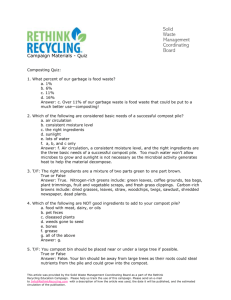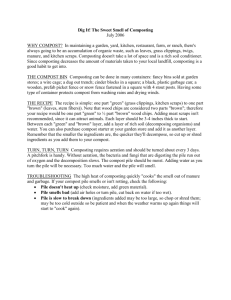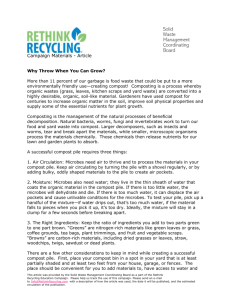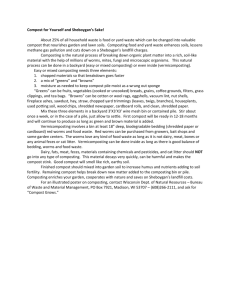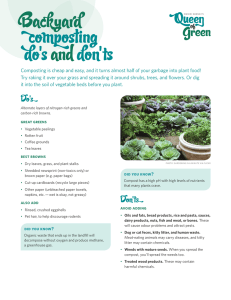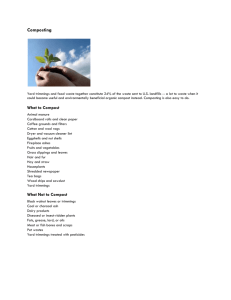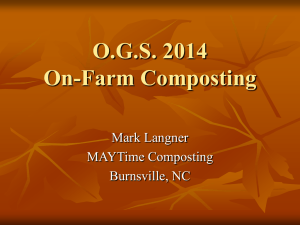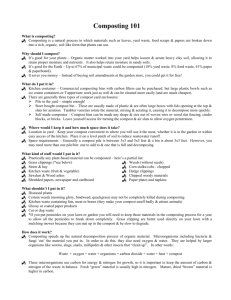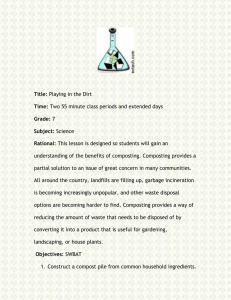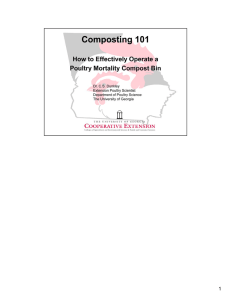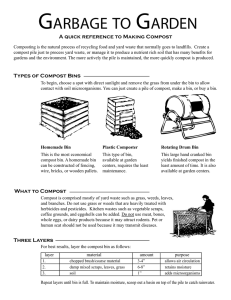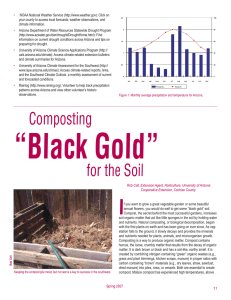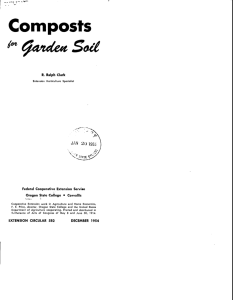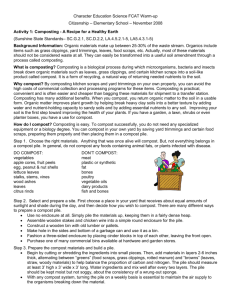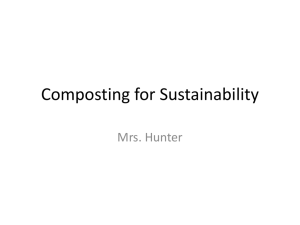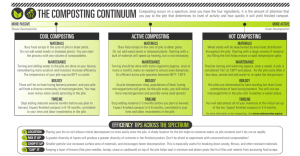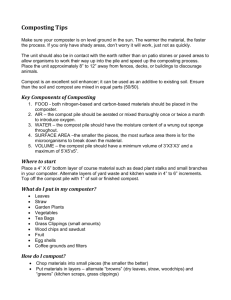Composting - Solid Waste Management Coordinating Board
advertisement
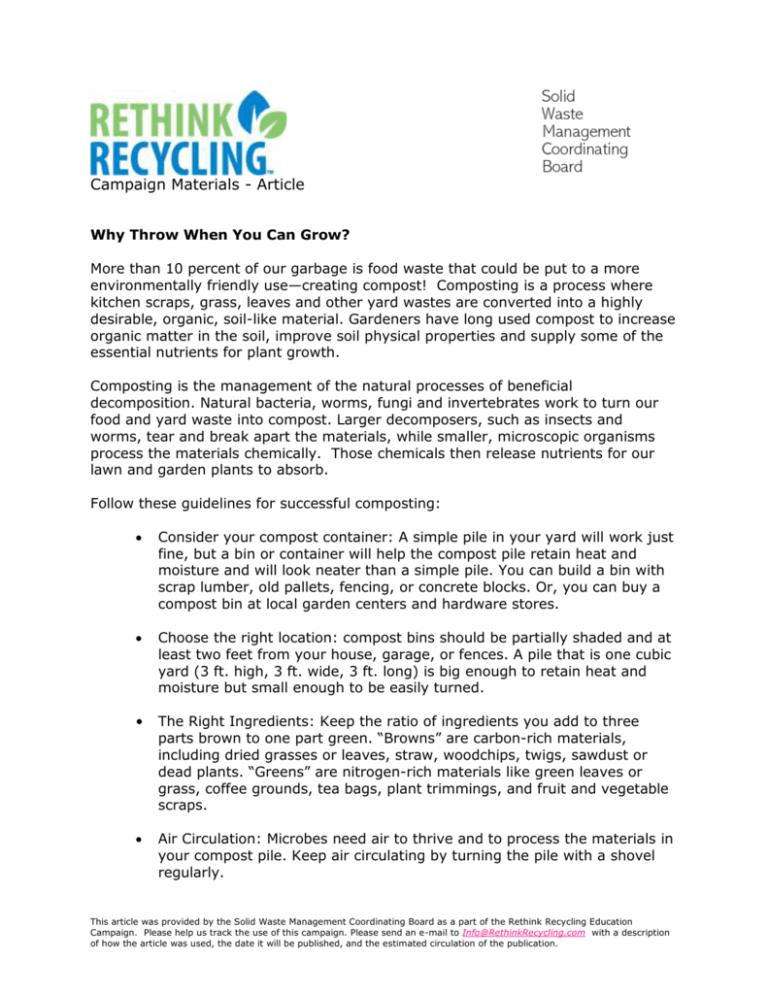
Campaign Materials - Article Why Throw When You Can Grow? More than 10 percent of our garbage is food waste that could be put to a more environmentally friendly use—creating compost! Composting is a process where kitchen scraps, grass, leaves and other yard wastes are converted into a highly desirable, organic, soil-like material. Gardeners have long used compost to increase organic matter in the soil, improve soil physical properties and supply some of the essential nutrients for plant growth. Composting is the management of the natural processes of beneficial decomposition. Natural bacteria, worms, fungi and invertebrates work to turn our food and yard waste into compost. Larger decomposers, such as insects and worms, tear and break apart the materials, while smaller, microscopic organisms process the materials chemically. Those chemicals then release nutrients for our lawn and garden plants to absorb. Follow these guidelines for successful composting: Consider your compost container: A simple pile in your yard will work just fine, but a bin or container will help the compost pile retain heat and moisture and will look neater than a simple pile. You can build a bin with scrap lumber, old pallets, fencing, or concrete blocks. Or, you can buy a compost bin at local garden centers and hardware stores. Choose the right location: compost bins should be partially shaded and at least two feet from your house, garage, or fences. A pile that is one cubic yard (3 ft. high, 3 ft. wide, 3 ft. long) is big enough to retain heat and moisture but small enough to be easily turned. • The Right Ingredients: Keep the ratio of ingredients you add to three parts brown to one part green. “Browns” are carbon-rich materials, including dried grasses or leaves, straw, woodchips, twigs, sawdust or dead plants. “Greens” are nitrogen-rich materials like green leaves or grass, coffee grounds, tea bags, plant trimmings, and fruit and vegetable scraps. Air Circulation: Microbes need air to thrive and to process the materials in your compost pile. Keep air circulating by turning the pile with a shovel regularly. This article was provided by the Solid Waste Management Coordinating Board as a part of the Rethink Recycling Education Campaign. Please help us track the use of this campaign. Please send an e-mail to Info@RethinkRecycling.com with a description of how the article was used, the date it will be published, and the estimated circulation of the publication. • Moisture: Microbes need water. To test your pile, pick up a handful of the mixture—if water drips out, that’s too much water, if the material falls to pieces when you pick it up, it’s too dry. Ideally, the mixture will stay in a clump for a few seconds before breaking apart. Contact your city recycling coordinator for composting requirements before starting a compost pile. Visit RethinkRecycling.com for information on your city’s requirements, where to buy a bin, and how to properly and successfully maintain your compost pile. This article was provided by the Solid Waste Management Coordinating Board as a part of the Rethink Recycling Education Campaign. Please help us track the use of this campaign. Please send an e-mail to Info@RethinkRecycling.com with a description of how the article was used, the date it will be published, and the estimated circulation of the publication.
